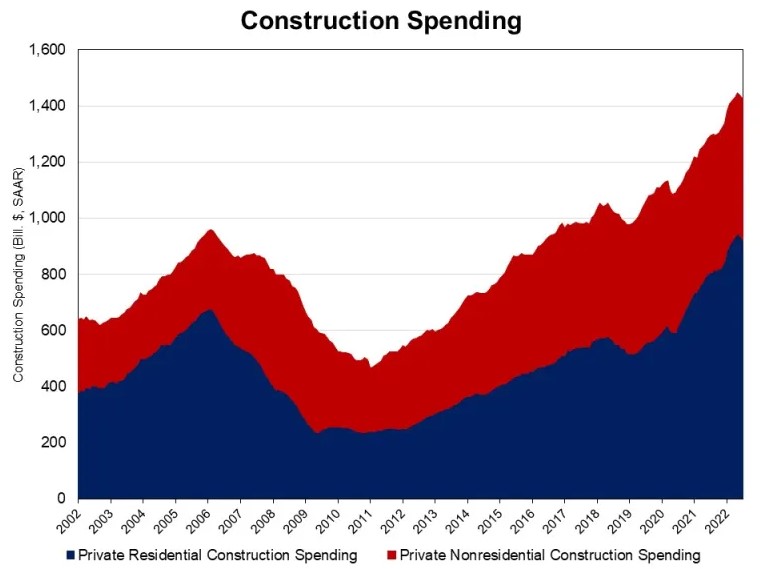Chart: July 2022 Private Residential Spending Slips Slightly
Originally Published by: NAHB — September 1, 2022
SBCA appreciates your input; please email us if you have any comments or corrections to this article.
Private residential construction spending declined further in July, as rising mortgage rates and elevated construction costs put a damper on the market. It fell 1.5% in July, down for the second straight month, according to NAHB’s analysis of the Census Construction Spending data. Private residential construction spending was 14.1% higher year-over-year.
The monthly declines are largely attributed to lower spending on single-family and multifamily. Spending on single-family construction dropped 4% in July, as single-family starts fell to the lowest reading since June 2020 and builder confidence plunged in July. Multifamily construction spending edged down by 0.6% in July, after an increase of 0.6% in June. Private residential improvements rose by 1.5% in July and was 38.3% higher over a year ago, as summer is the best time for remodeling. Keep in mind that construction spending reports the value of property put-in-place, so it’s the measure of property at the end of the construction pipeline.
The NAHB construction spending index, which is shown in the graph below (the base is January 2000), illustrates how construction spending on single-family and multifamily has slowed since early 2022 under the pressure of supply-chain issues and elevated interest rates. Before the COVID-19 hit the U.S. economy, single-family construction and home improvement experienced solid growth from the second half of 2019 to February 2020, with a quick rebound since July 2020.

Spending on private nonresidential construction inched up by 0.4% in July to a seasonally adjusted annual rate of $503.9 billion. The monthly nonresidential spending increase was mainly due to more spending on the class of commercial property ($0.7 billion), followed by the manufacturing category ($0.6 billion), and the amusement and recreation category ($0.2 billion).

